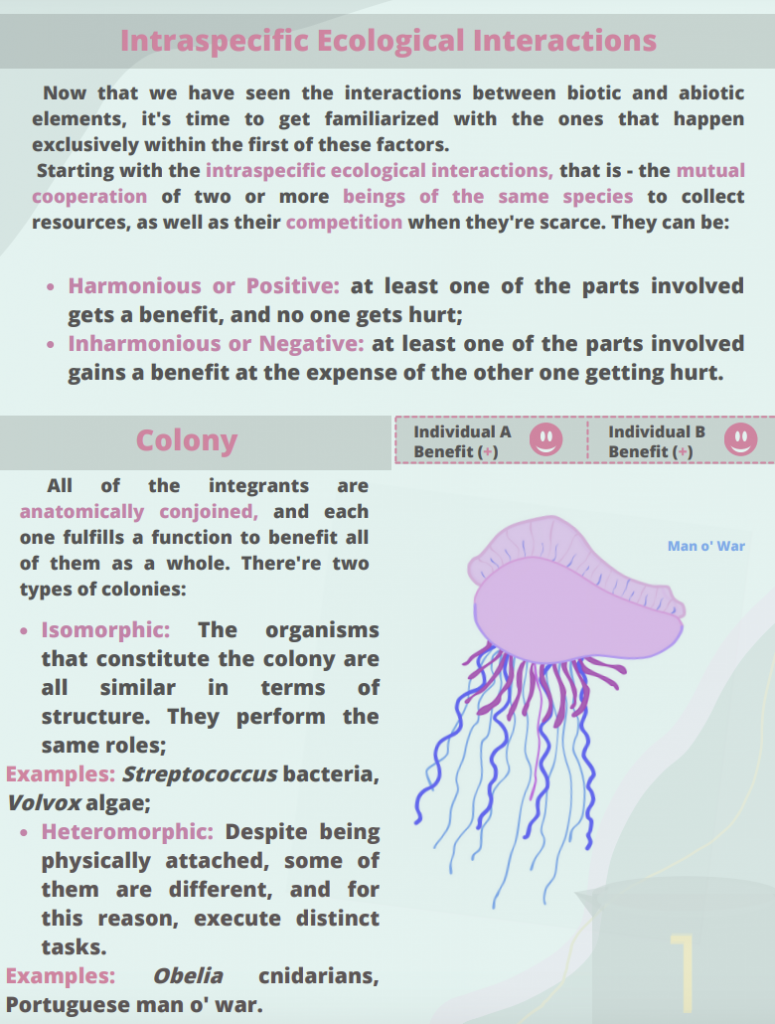Ecosystem Part III Ecological Interactions
Summary:
Ecological interactions within ecosystems involve a complex web of relationships between different species. Intraspecific interactions among members of the same species can be harmonious (beneficial to all involved) or inharmonious (harmful to at least one individual). Colonies, where anatomically conjoined individuals fulfil specific roles for the benefit of the entire group, exemplify harmonious intraspecific interaction. On the other hand, societies involve independent members with specialized roles, often organized hierarchically, contributing to the species’ survival.
Moving to interspecific interactions between different species, mutualism is a harmonious association where both species benefit and rely on each other for survival. Protocooperation is a less critical form of mutualism where species collaborate but can survive independently. Commensalism involves one species benefiting from another’s leftovers or shelter without causing harm. Tenancy is similar to commensalism, but one species finds shelter in another. However, unlike parasitism, tenancy doesn’t harm the host.
Inharmonious interspecific interactions include competition, where species vie for limited resources, and predation, where one species benefits by consuming another. Parasitism involves one species benefiting at the host’s expense, with endoparasites residing inside the host and ectoparasites attaching to the host’s exterior. Amensalism involves one species inhibiting another’s development through toxic compounds or other means.
These ecological interactions collectively shape the dynamics of ecosystems, driving species distribution, population sizes, and overall ecological balance.
Excerpt:
Ecosystem Part III Ecological Interactions
SUMMARY
Ecosystem Part III: Ecological Interactions
1. Intraspecific – Harmonious
2. Intraspecific – Inharmonious
3. Interspecific – Harmonious
4. Interspecific – Inharmonious
5. Scheme
INTRASPECIFIC HARMONIOUS
Intraspecific Ecological Interactions
Now that we have seen the interactions between biotic and abiotic elements, it’s time to get familiarized with the ones that happen exclusively within the first of these factors. Starting with the intraspecific ecological interactions – the mutual cooperation of two or more beings of the same species to collect resources, as well as their competition when they’re scarce. They can be:
- Harmonious or Positive: at least one of the parts involved gets a benefit, and no one gets hurt;
- Inharmonious or Negative: at least one of the parts involved gains a benefit at the expense of the other getting hurt.


Reviews